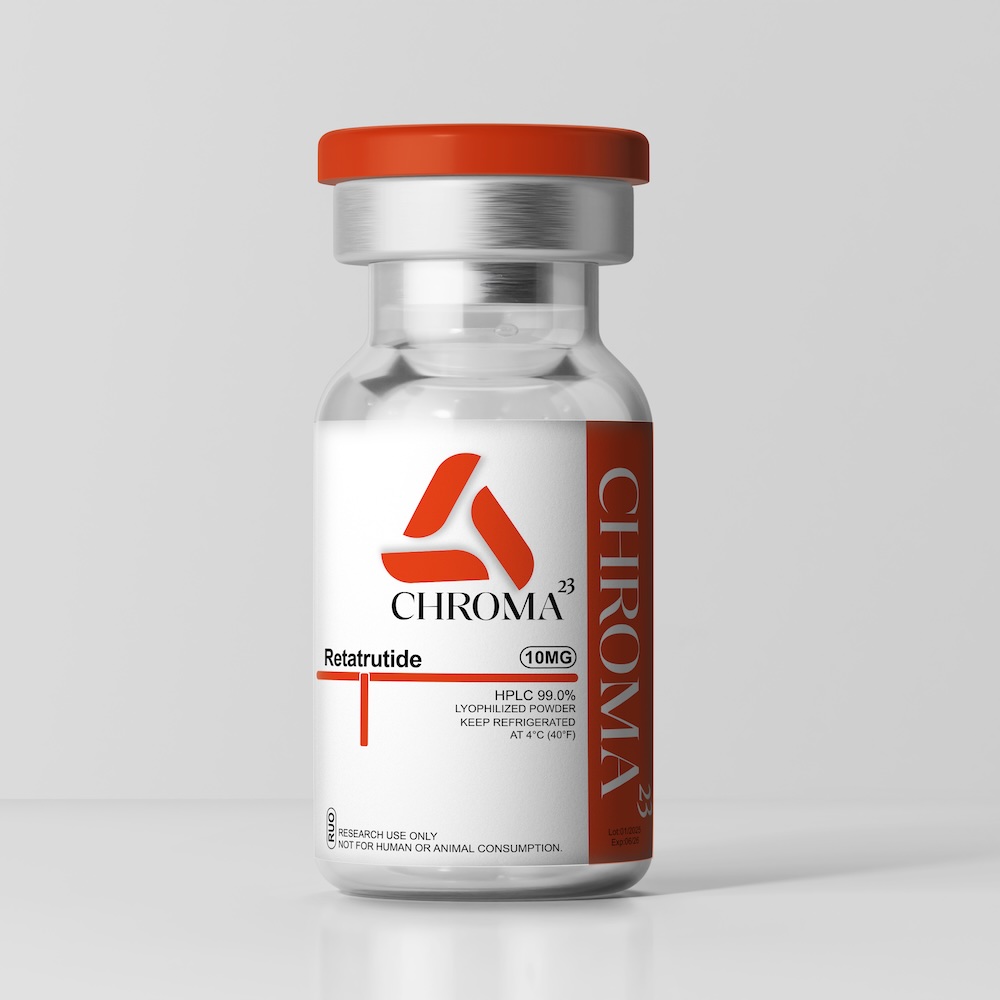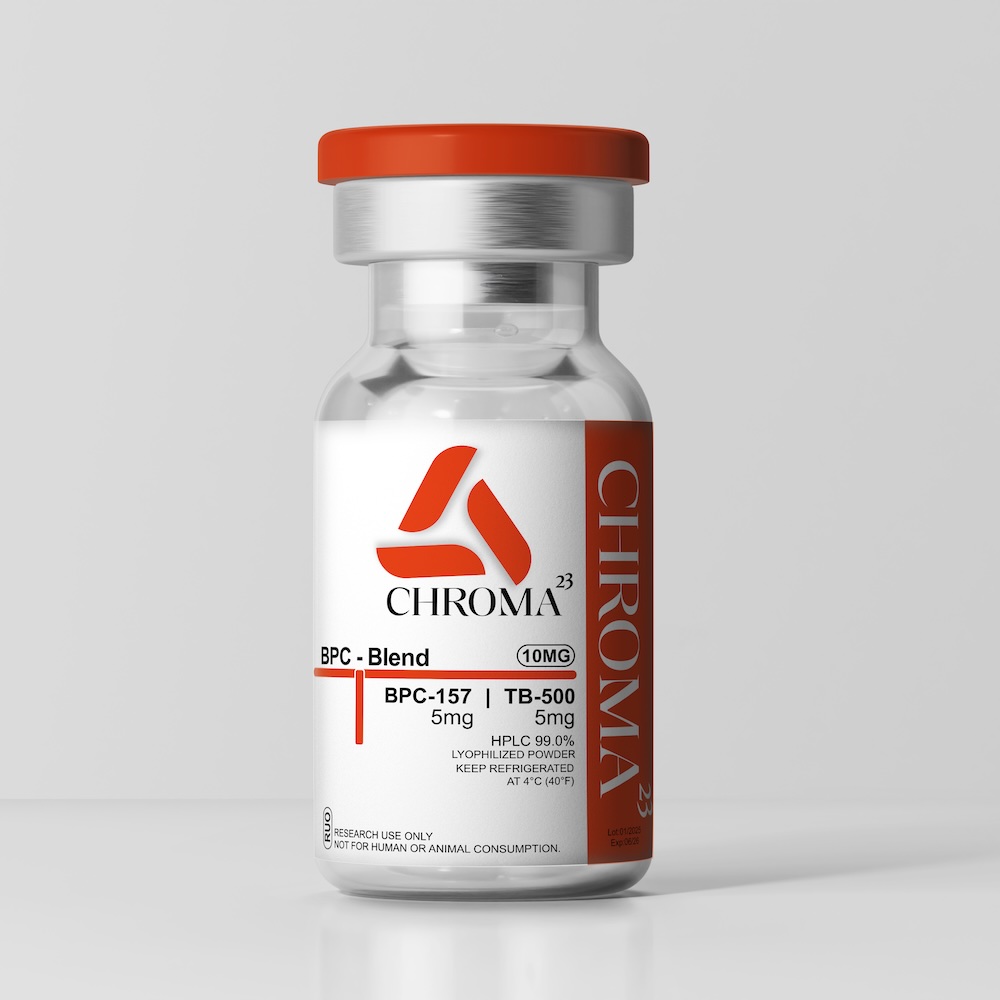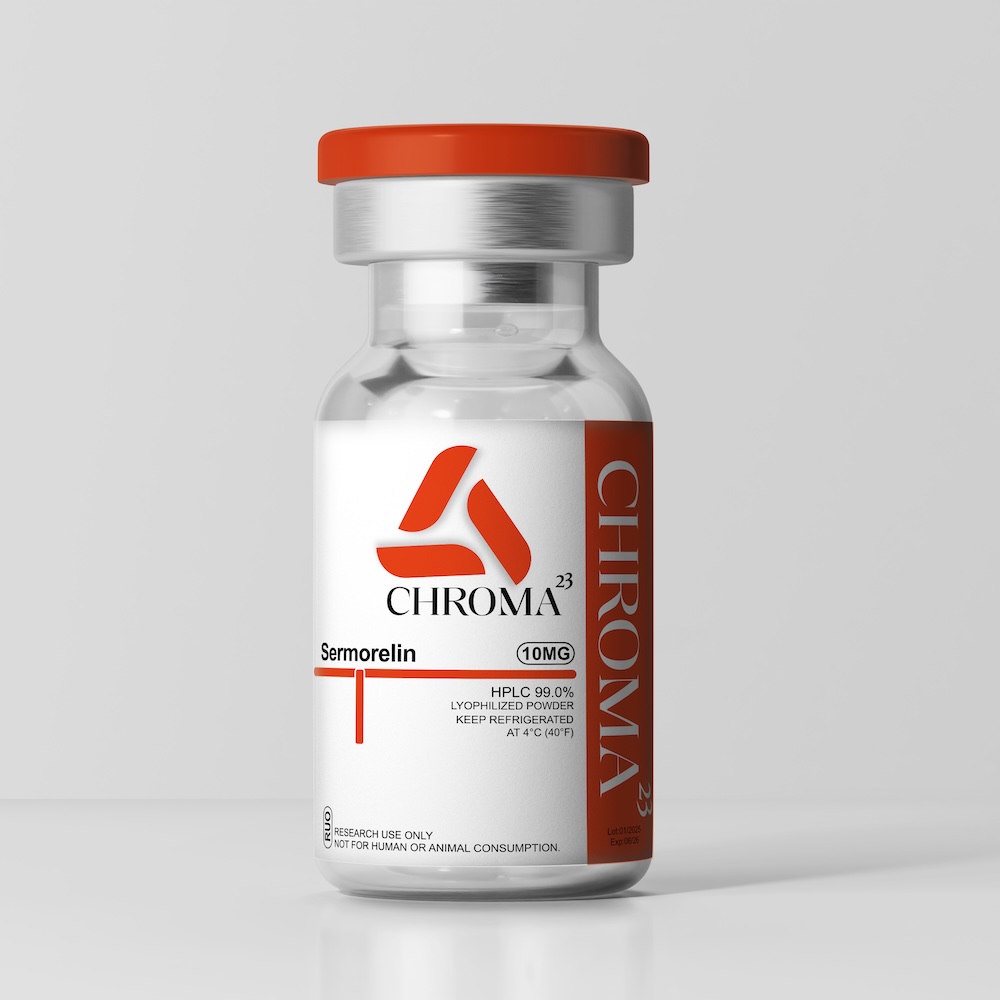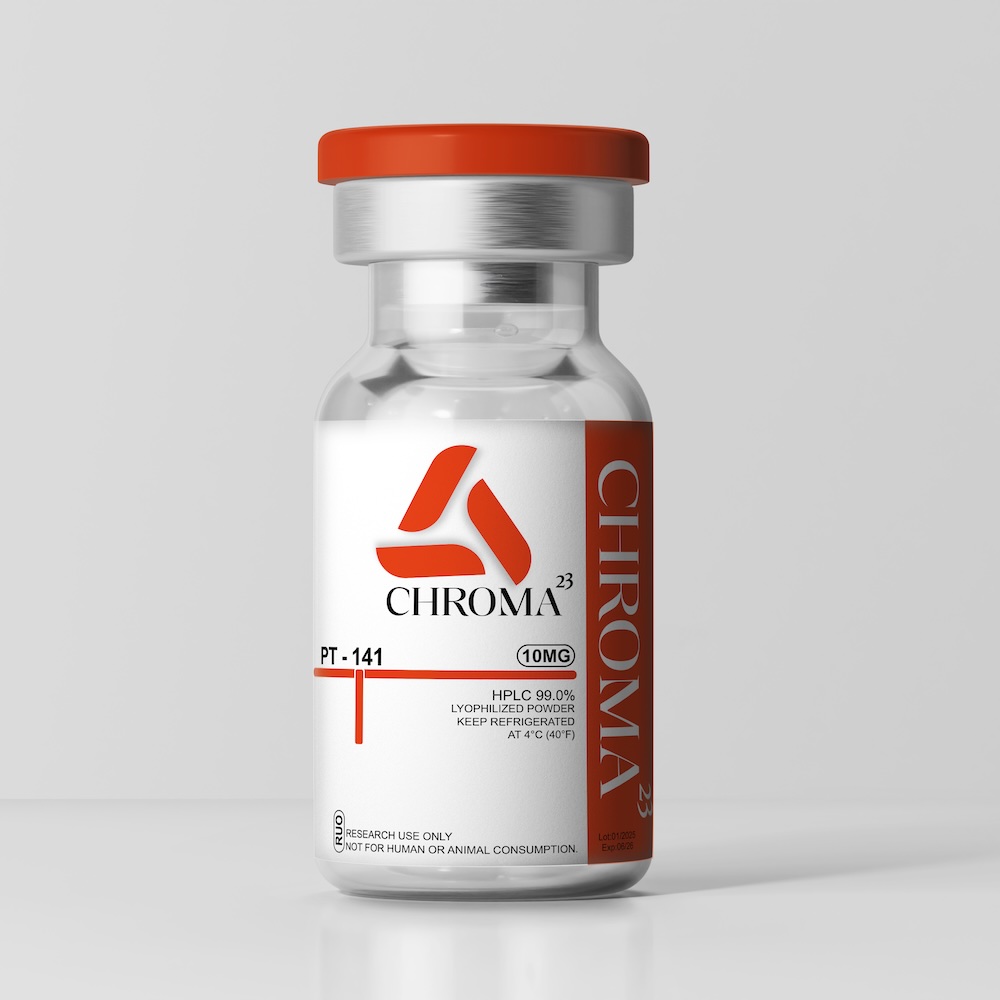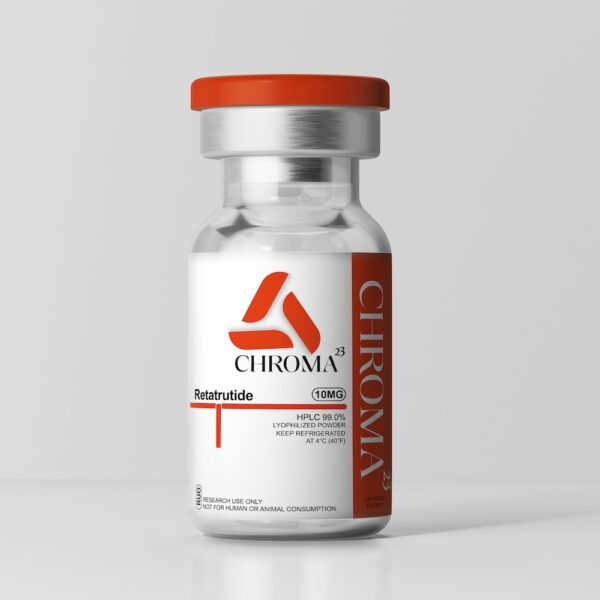Retatrutide Research
Retatrutide was originally developed by Eli Lilly primarily for treating obesity and type 2 diabetes. Clinical trials have shown significant weight loss and metabolic improvements, with phase 2 trials demonstrating average weight reductions of approximately 24% at higher doses over 48 weeks – exceeding the efficacy of earlier generation GLP-1 receptor agonists.
Retatrutide works through a triple-agonist approach:
- GLP-1 receptor activation: Enhances insulin secretion in a glucose-dependent manner, slows gastric emptying, and promotes satiety by acting on brain centers that control appetite
- GIP receptor activation: Amplifies insulin secretion and improves insulin sensitivity
- Glucagon receptor activation: Increases energy expenditure and fat oxidation
This multifaceted approach targets multiple pathways involved in metabolism and weight regulation simultaneously.
Efficacy in Weight Management and Glycemic Control
Retatrutide has demonstrated significant efficacy in weight reduction across multiple studies. In a phase 2 trial, participants receiving retatrutide experienced substantial weight loss, with reductions of up to 24.2% at the highest dose of 12 mg over 48 weeks, compared to a 2.1% reduction in the placebo group1.
Retatrutide was also shown to be more effective in weight reduction compared to dulaglutide, another GLP-1 receptor agonist2.
Such findings designate retatrutide as a potent contender against existing therapies, positioning it favorably in terms of weight loss efficacy relative to competitors like semaglutide and tirzepatide.
Retatrutide has also been effective in improving glycemic control. In individuals with T2DM, it significantly reduced glycated hemoglobin (HbA1c) levels by up to 2.2%3.
The triagonist’s impact on glycemic control is attributed to its action on multiple hormone receptors, which enhances insulin sensitivity and beta-cell function. When compared directly to dulaglutide, retatrutide showed a modest improvement in glucose lowering3.
Cardiometabolic Effects
As described above, Retatrutide’s actions on GLP-1, GIP, and glucagon receptors are known to contribute to weight loss and improved glycemic control. These effects are associated with multiple cardiometabolic benefits, including improved lipid profiles, blood pressure, and reduced inflammation, which collectively suggest potential cardiovascular protection.
Retatrutide has been associated with improvements in lipid profiles, including reductions in triglycerides, LDL, and VLDL cholesterol. It also showed a significant reduction in blood pressure in both T2DM and obese patients4.
Retatrutide has also shown potential benefits on kidney function, with significant reductions in urine albumin-to-creatinine ratio (UACR) and increases in estimated glomerular filtration rate (eGFR) in obese patients7.
Appetite Modulation
Retatrutide’s influence on appetite regulates caloric intake through gastrointestinal actions. Evidence suggests that retatrutide delays gastric emptying, prolonging satiety, and subsequently reducing overall food consumption5.
This mechanism of prolonged digestion aligns with overweight treatment objectives, reinforcing retatrutide’s applicability to obesity management.
Effects on Liver Health and Lipid Accumulation
The nexus between obesity and liver health has fueled investigations into retatrutide’s potential impact on conditions such as metabolic dysfunction-associated steatotic liver disease (MASLD). A growing body of evidence suggests that retatrutide could mitigate aspects of liver dysfunction, including reductions in liver-derived enzymes such as alanine aminotransferase (ALT), indicative of improved hepatic health6.
Retatrutide’s ability to influence liver triglyceride concentrations forms another critical area of research. In clinical trials, retatrutide has exhibited a capacity to decrease hepatic fat content, confirming its prospect for treating NAFLD and enhancing overall liver function4. Such observations underscore the therapeutic implications of retatrutide beyond mere weight loss into essential metabolic health.
References
- Wen, Y., Lemen, D. M., Chen, Y., Lin, Y., Thomas, M. K., Hartman, M. L., … & Konrad, R. J. (2024). Reduction of triglyceride-rich lipoproteins with retatrutide in type 2 diabetes may be explained by concurrent reduction in angptl3/8 levels. European Heart Journal, 45(Supplement_1). https://doi.org/10.1093/eurheartj/ehae666.2862
- Lopez, D., Pajimna, J., Milan, M., Jasul, G., Orpilla, G., Zapanta, I., Serquiña, B., & Dychiao, G. (2024). 7792 Efficacy of Retatrutide for Weight Reduction and Its Cardiometabolic Effects Among Adults: A Systematic Review and Meta-Analysis. Journal of the Endocrine Society, 8. https://doi.org/10.1210/jendso/bvae163.749.
- Rosenstock, J., Coskun, T., Hartman, M., Lou, J., Wu, Q., Du, Y., Gurbuz, S., Mather, K., Milicevic, Z., & Thomas, M. (2024). 266-OR: Retatrutide, an Agonist of GIP, GLP-1, and Glucagon Receptors, Improves Markers of Pancreatic Beta-Cell Function and Insulin Sensitivity. Diabetes. https://doi.org/10.2337/db24-266-or.
- Pirro, V., Pearson, M., Lin, Y., Hartman, M., Roth, K., Duffin, K., Willency, J., Haupt, A., & Ruotolo, G. (2024). 117-OR: Effects of Triple-Hormone Receptor Agonist Retatrutide on Lipid Profiling in Participants with Obesity. Diabetes. https://doi.org/10.2337/db24-117-or.
- Tewari, J., Qidwai, K. A., Tewari, A., Kaur, S., & Maheshwari, A. (2025). Efficacy and safety of triple hormone receptor agonist retatrutide for the management of obesity: a systematic review and meta-analysis. Expert Review of Clinical Pharmacology, 18(1-2), 51-66. https://doi.org/10.1080/17512433.2025.2450254
- Polovina, S., Šumarac-Dumanović, M., & Micić, D. (2024). Obesity management: a clinician’s perspective lečenje gojaznosti iz perspective kliničara. Arhiv Za Farmaciju, 74(3), 335-347. https://doi.org/10.5937/arhfarm74-50566
- Heerspink, H., Lu, Z., Du, Y., Duffin, K., Coskun, T., Haupt, A., & Hartman, M. (2024). 754-P: Effect of Retatrutide on Kidney Parameters in People with Type 2 Diabetes and/or Obesity—A Post-Hoc Analysis of Two Phase 2 Trials. Diabetes. https://doi.org/10.2337/db24-754-p.

